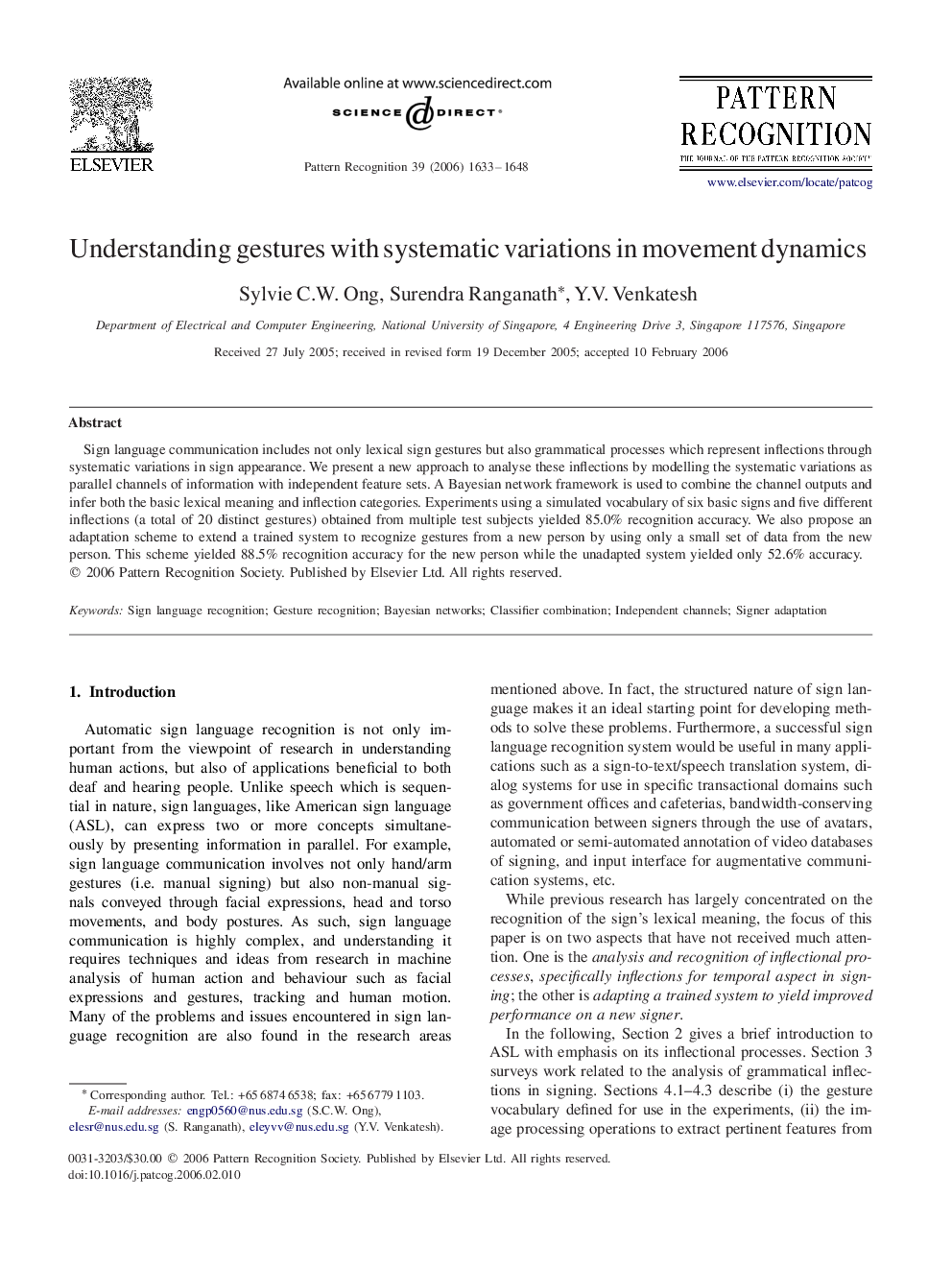| Article ID | Journal | Published Year | Pages | File Type |
|---|---|---|---|---|
| 531197 | Pattern Recognition | 2006 | 16 Pages |
Sign language communication includes not only lexical sign gestures but also grammatical processes which represent inflections through systematic variations in sign appearance. We present a new approach to analyse these inflections by modelling the systematic variations as parallel channels of information with independent feature sets. A Bayesian network framework is used to combine the channel outputs and infer both the basic lexical meaning and inflection categories. Experiments using a simulated vocabulary of six basic signs and five different inflections (a total of 20 distinct gestures) obtained from multiple test subjects yielded 85.0% recognition accuracy. We also propose an adaptation scheme to extend a trained system to recognize gestures from a new person by using only a small set of data from the new person. This scheme yielded 88.5% recognition accuracy for the new person while the unadapted system yielded only 52.6% accuracy.
